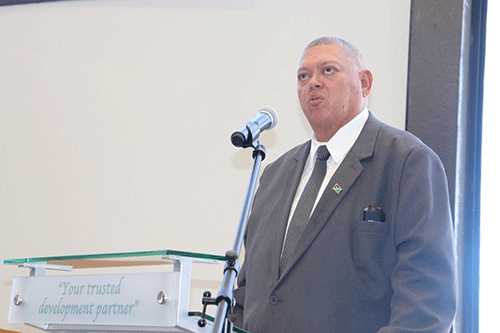WALVIS BAY – The fisheries ministry has cautioned the industry against illegal unregulated and unreported (IUU) fishing as well as fishing within the restricted 200m depth zone.
According to the ministry, law enforcement officers alerted the ministry of IUU activities sighted around the northern maritime border as well as vessels fishing within the restricted 200-depth zone.
Fisheries minister Derek Klazen on Friday said that they have upgraded their vessel monitoring system (VMS) to incorporate a vessel automatic identification system (AIS) as Themis Radar Imagery for the identification of vessels that switches their AIS off. This system will provide the ministry with accurate information such as vessel location even if their systems are off.
“Some of the vessels switch off their identity system so that they don’t get detected within the restricted zone or are fishing illegally in Namibian waters.
Some also went as far as dismissing Namibian crew members who reported these illegal fishing activities and contravention of fisheries legislations,” Klazen said.
He added, the ministry, in an effort to curb these illegal activities, changed the VMS reporting frequency from two-hour intervals that came into effect in June 2021 to hourly intervals effective 1 November this year.
By doing so, he said Namibia is also in line with many countries’ monitoring systems, and regional fisheries management organizations have done the same.
“It is worth noting that, the ministry will continue the fight against IUU fishing vessels calling on our ports, including those who are supporting such vessels. The VMS is another conservation measure that reduces the chances of IUU fishing,” he explained.
According to Klazen, the ministry takes the activities of patrolling the exclusive economic zone (EEZ) seriously and will continue patrolling to apprehend IUU fishing vessels, including fishing vessels that try to enter the EEZ without the required authorisation.
“The goal is to protect and enforce the fisheries legislations both on capture fisheries and inland fisheries. The current level of compliance with national fisheries legislations by licensed fishing vessels is at an acceptable level and the ministry would like to highlight that detection of IUU fishing vessels during 2021/2022 improved in part because of joint patrol efforts with relevant law enforcement agencies and international partners,” Klazen said.
Restricted zone
The wet landed horse mackerel sector continues to pressure the ministry as they want to be allowed to catch within the 200m restricted zone due to continuous poor catches.
However, chairperson of the Confederation of Namibian Fishing Associations, Matti Amukwa once again highlighted the importance of the restriction, saying research shows that 20 000 tons of the monk biomass are found in water depth of between 100 – 300 metres which is 56% of the total stock.
“Two hake species which are caught in Namibia, spend their first years in shallow waters migrating to around 300 to 350-metre depth in their adult stage. Surveys have shown 480 000 tons of hake in waters ranging from 100 to 200 metres and another 260 000 tons from 201 to 300 metres. Allowing access will cause harm, not only to horse mackerel but to other commercial species found in
Namibian waters,” Amukwa cautioned.
He said the position of the association is still clear that no fishing should take place within the 200m restricted area.
edeklerk@nepc.com.na
Caption: (Fisheries)


